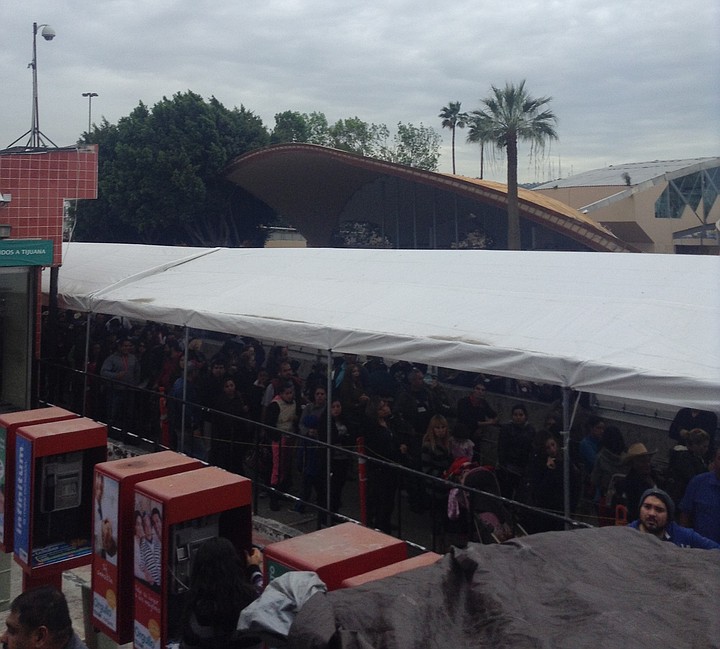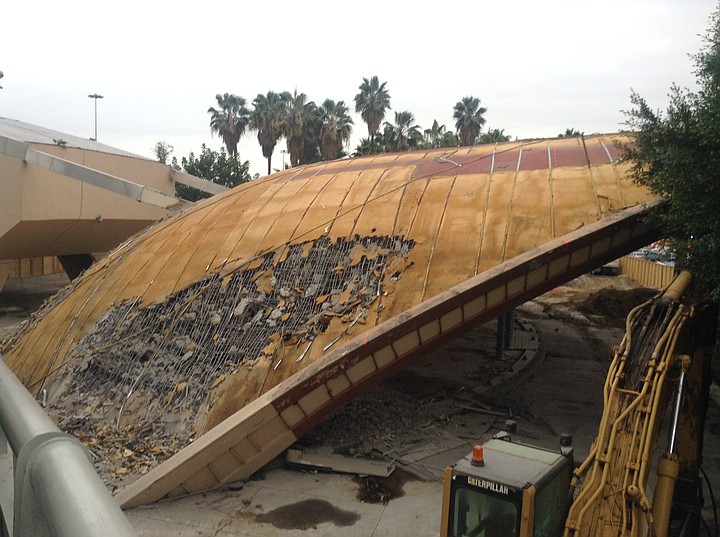 Facebook
Facebook
 X
X
 Instagram
Instagram
 TikTok
TikTok
 Youtube
Youtube

“I am immortal. I got my Sentri card,” posted Erick Mark Cavadas on his Facebook feed in early December.
“Don't get too excited, the sentri lane has been sucking,” replied a girl that I did not know. (She was speaking of the Sentri car lane, which is different than the pedestrian lane.)
Erick, like me and thousands of other workers, lives in Tijuana and crosses to get to his job at a law firm in San Diego every morning. I used to see Erick early, standing in line nearby, looking miserable and tired. Then I started to see him strolling with a smile on his face to the front of the line.

In December, which is usually a month of heavy border traffic, the Sentri car-lane wait was almost a full hour. Users are accustomed to never wait more than 20 minutes by car (or no minutes by foot). The congestion was going on while those in the regular lane and Ready Lane suffered for more than two hours. However, this is a huge improvement. In December of 2013, the car-lane wait could be over four hours. Since the opening of new border lanes, the border wait has not passed the four-hour mark. A two-hour wait is, hopefully, as bad as it will be for a long time.
The pedestrian lane in San Ysidro was also improved in late November. Border activist Monica Schroeder, with her nonprofit Tijuana Te Quiero, was instrumental in getting rid of the old metallic roof and having it replaced with a white tarp shelter donated by the San Ysidro Chamber of Commerce.

More improvements are planned for both car lanes and pedestrian lanes. The east side shell of the architectural landmark known as La Concha has been demolished, despite historians’ efforts to try and save the building (Puerta Mexico); its demise will allow for more car lanes to be opened. A new pedestrian path into Mexico was mentioned several times last year, but as yet there are no major signs that this will be occurring soon.
Those who have Sentri cards are spoiled; waiting of any sort becomes unbearable. I remember my roommate's girlfriend's reaction when she lost her Sentri pass last summer. There was a two-hour wait line on a Saturday afternoon and she had to get back to San Diego. She walked to the front of the line to tell the Border Patrol officer that she had a Sentri but it had been stolen; the officer sent her to the back of the line. She came back to the apartment in tears, cursing the line.
I had an appointment for my Sentri card interview on December 8, after passing the background check a month earlier. Everyone I knew who had a card told me that if I passed my background check I was in the clear; still, I was nervous.
The interview was at the San Ysidro border crossing, in a small room with a couple of officers behind a desk and other interviewees sitting across from them.
I saw a woman in her 40s get rejected because of a misdemeanor she had. They told her to wait until ten years have passed from when she committed the crime.
My interview was short and sweet. It started with the officer taking a picture with a webcam, which he pointed at me swiftly, resulting in an awkward lopsided profile of my face. After taking my picture and my fingerprints, the interview consisted of him asking my reasons for needing a pass, information about myself, my family, and my past, proof of income, proof of residence, and a reminder of how serious border crossing is.
With the interview finalized, I asked, “Does this mean I got my Sentri pass?” “It means that you are in a very good position to get your Sentri,” replied the officer. He gave my papers to a secretary, who charged $97.25 on my debit card ($14.50 for fingerprint fee, $82.75 for the document). My pass was due to arrive seven to ten business days upon approval; it did, on day eight.
I crossed the border in the first half of December on early mornings by foot without a Sentri pass, waiting in line an average of an hour and a half. Since getting my card, I have not waited more than a minute to cross.
The feeling is like being able to walk through walls.
If you don't want to worry about crossing the border for the next five years, getting a Sentri pass costs $122.25. If you cross by car, you also have to register your vehicle. There is also a Global Entry pass: it is similar to Sentri, but it works for any U.S. port of entry, while Sentri only works on limited land crossings between the U.S. and Mexico.


“I am immortal. I got my Sentri card,” posted Erick Mark Cavadas on his Facebook feed in early December.
“Don't get too excited, the sentri lane has been sucking,” replied a girl that I did not know. (She was speaking of the Sentri car lane, which is different than the pedestrian lane.)
Erick, like me and thousands of other workers, lives in Tijuana and crosses to get to his job at a law firm in San Diego every morning. I used to see Erick early, standing in line nearby, looking miserable and tired. Then I started to see him strolling with a smile on his face to the front of the line.

In December, which is usually a month of heavy border traffic, the Sentri car-lane wait was almost a full hour. Users are accustomed to never wait more than 20 minutes by car (or no minutes by foot). The congestion was going on while those in the regular lane and Ready Lane suffered for more than two hours. However, this is a huge improvement. In December of 2013, the car-lane wait could be over four hours. Since the opening of new border lanes, the border wait has not passed the four-hour mark. A two-hour wait is, hopefully, as bad as it will be for a long time.
The pedestrian lane in San Ysidro was also improved in late November. Border activist Monica Schroeder, with her nonprofit Tijuana Te Quiero, was instrumental in getting rid of the old metallic roof and having it replaced with a white tarp shelter donated by the San Ysidro Chamber of Commerce.

More improvements are planned for both car lanes and pedestrian lanes. The east side shell of the architectural landmark known as La Concha has been demolished, despite historians’ efforts to try and save the building (Puerta Mexico); its demise will allow for more car lanes to be opened. A new pedestrian path into Mexico was mentioned several times last year, but as yet there are no major signs that this will be occurring soon.
Those who have Sentri cards are spoiled; waiting of any sort becomes unbearable. I remember my roommate's girlfriend's reaction when she lost her Sentri pass last summer. There was a two-hour wait line on a Saturday afternoon and she had to get back to San Diego. She walked to the front of the line to tell the Border Patrol officer that she had a Sentri but it had been stolen; the officer sent her to the back of the line. She came back to the apartment in tears, cursing the line.
I had an appointment for my Sentri card interview on December 8, after passing the background check a month earlier. Everyone I knew who had a card told me that if I passed my background check I was in the clear; still, I was nervous.
The interview was at the San Ysidro border crossing, in a small room with a couple of officers behind a desk and other interviewees sitting across from them.
I saw a woman in her 40s get rejected because of a misdemeanor she had. They told her to wait until ten years have passed from when she committed the crime.
My interview was short and sweet. It started with the officer taking a picture with a webcam, which he pointed at me swiftly, resulting in an awkward lopsided profile of my face. After taking my picture and my fingerprints, the interview consisted of him asking my reasons for needing a pass, information about myself, my family, and my past, proof of income, proof of residence, and a reminder of how serious border crossing is.
With the interview finalized, I asked, “Does this mean I got my Sentri pass?” “It means that you are in a very good position to get your Sentri,” replied the officer. He gave my papers to a secretary, who charged $97.25 on my debit card ($14.50 for fingerprint fee, $82.75 for the document). My pass was due to arrive seven to ten business days upon approval; it did, on day eight.
I crossed the border in the first half of December on early mornings by foot without a Sentri pass, waiting in line an average of an hour and a half. Since getting my card, I have not waited more than a minute to cross.
The feeling is like being able to walk through walls.
If you don't want to worry about crossing the border for the next five years, getting a Sentri pass costs $122.25. If you cross by car, you also have to register your vehicle. There is also a Global Entry pass: it is similar to Sentri, but it works for any U.S. port of entry, while Sentri only works on limited land crossings between the U.S. and Mexico.
Comments